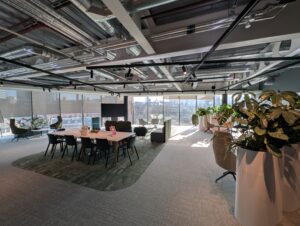Academics from Swansea University have published a toolkit on how to build a low-carbon home.
The aim is to encourage others to construct these ‘active buildings’ as it would drastically cut the UK’s carbon footprint.
The active building design principle was pioneered by researchers at Swansea University’s SPECIFIC Innovation & Knowledge Centre.
It combines renewable energy technologies in one intelligent system, all integrated into the building, providing occupants with low carbon energy for heat, power and transport.
It has been proven to work in two award-winning buildings at Swansea University’s Bay Campus – the Active Classroom and the Active Office – which have now been in operation for over two years.
Both buildings can generate and store enough solar energy to meet their own needs, plus have enough left over to charge up electric vehicles or share with other buildings.
The toolkit has been written to share the principles used in the active buildings and the learning from them, with the aim of encouraging others to adopt or improve on them and to support wider uptake of low carbon designs.
‘The way we heat and power our buildings accounts for 40% of UK carbon emissions, and that has to change. 85% of UK homes use gas boilers for heating, but they will be banned in new homes from 2025,’ said author, Joanna Clarke.
‘The Welsh Government has gone a step further by declaring that new homes must be both heated and powered from clean energy sources by then. That’s just five years away. Are we ready?’
Professor Dave Worsley, principal investigator at SPECIFIC, added: ‘This is an excellent guide which will help designers negotiate the complications of designing Active Buildings. It’s freely accessible to all and has the detail and references necessary to support widespread uptake of low carbon building design”.
‘We feel we’ve got some experience to share but we’re also keen to learn from others. Change can only happen if the whole sector works together.’
Photo Credit – Swansea University














